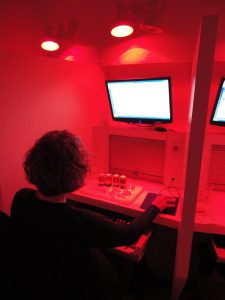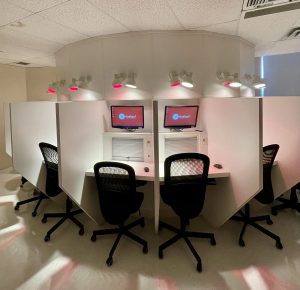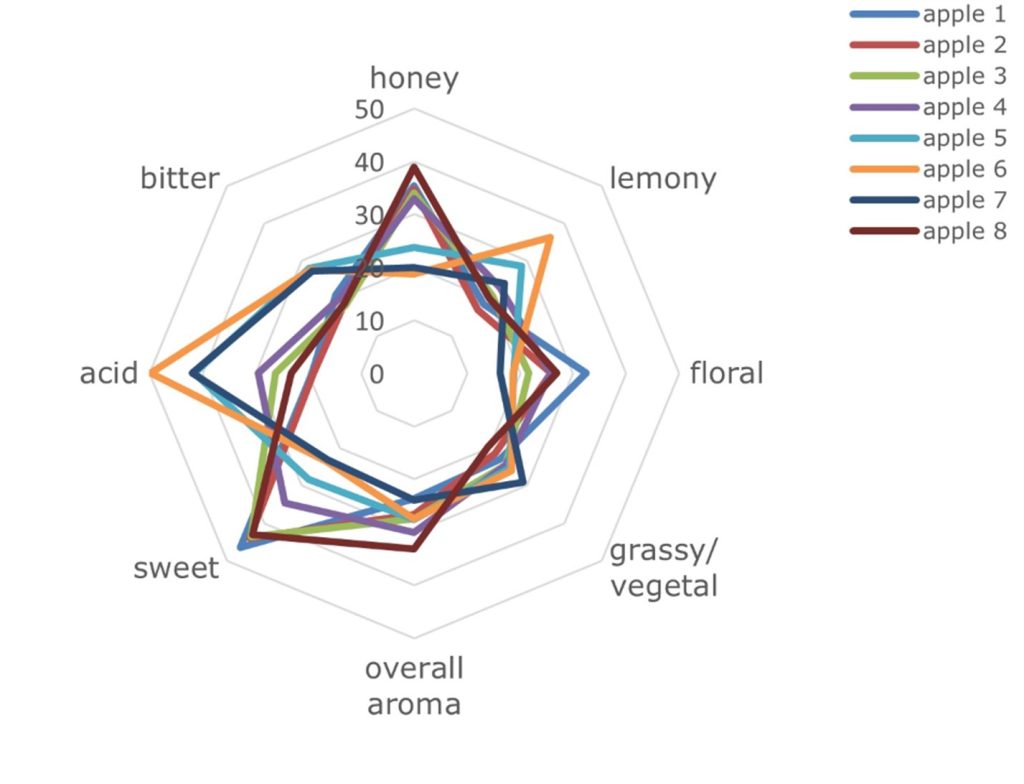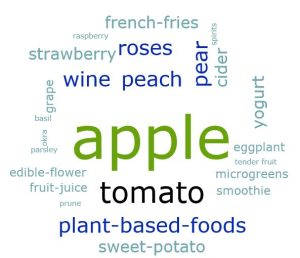Vineland’s trained sensory panel
Sensory Science
Sensory science is defined by ASTM International as a scientific discipline used to evoke, measure, analyze and interpret a person’s reactions to products perceived by the five senses (taste, smell, sight, hearing and touch). At Vineland, we use sensory science as a foundational tool to describe and identify differences in fruits, vegetables and ornamental plants, enabling us to understand how these differences impact consumer acceptance and liking. The ultimate goal is to ensure that new varieties and new product formulations meet the expectations of consumers for flavour, texture and appearance.
It is not easy or straightforward to measure and quantify these sensory properties in a reproducible way. To address these challenges at Vineland we use a trained sensory panel along with specialized tasting laboratory, tools and methodologies to create sensory profiles of products such as apples, plant-based foods and wine.
What is a trained sensory panel?

A trained sensory panel is a group of people that evaluate products using their five senses.
Each panelist is recruited and screened for sensory acuity, sensory memory and descriptive abilities. The panelists are continuously trained and monitored for performance to ensure that their data are reliable, repeatable and in agreement using tools like calibration checks, sensory references and duplicate samples.
Meet the panelists
At Vineland, we have an 18-member trained sensory panel. Our trained panelists are part-time Vineland employees, recruited from local communities.
We recruit new members to join our trained sensory panel every few years, as needed. The first recruitment was conducted in 2009 and we still have several original members on our team.
Our panelists meet once to three times each week for a 1.5-hour session in our tasting laboratory with one of our sensory panel leaders.
During sessions the panelists are presented products blind and asked to evaluate them. The trained panelists do not describe liking or preference but rather describe and differentiate sensory properties — for example the intensity of attributes — so that we understand the aroma, taste, flavour and texture of horticultural products.

Specialized tools
To collect robust, reliable data from human subjects and avoid bias, we rely on tools, like our specialized tasting laboratory. Key features of our sensory laboratory include:
1. Separate booths for tasting
2. Specialized lighting to minimize visual bias: red, green and white light options
3. Neutral and minimal décor
4. Ventilation fans to reduce outside aromas
5. Serving hatches

Other tools that we use include descriptive lexicons (lists of attributes) with verbal definitions and reference samples. For each descriptive lexicon, we clarify and define sensory attributes to make sure that all panelists have the same understanding of perceptions. Even common words like crunchy and crisp can have different meanings to different people. We also use aroma and taste references like a sweet or lemony aroma solution to enhance overall panelist agreement and calibration.
These tools help us collect robust sensory data. See figure 3 for an example data output from Vineland’s sensory panel.

What have we worked on?
Our trained sensory panel is unique in that they have evaluated a wide range of horticultural products, both fresh and processed.
See word cloud, right, for a visual representation of the product diversity that we have worked on.
Questions? Looking for more information?
Amy Bowen, PhD, Director, Consumer, Sensory & Market Insights
amy.bowen@vinelandresearch.com, 905-562-0320 x805
